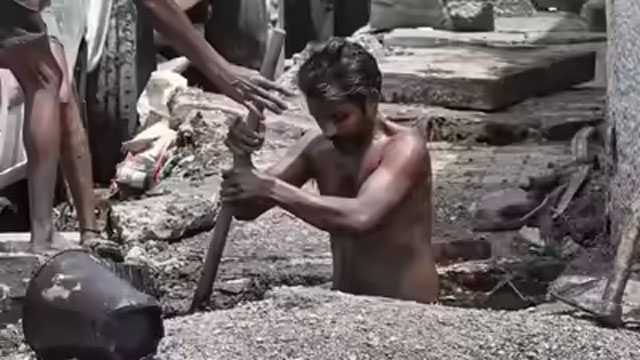Daijiworld Media Network -Mumbai
Mumbai, Nov 21: A week after inhaling the poisonous fumes that claimed two lives inside an underground sewage treatment plant tank in Powai, 23-year-old Sudam Mandal stood quietly in the morning rush outside KEM Hospital, Parel his yellow shirt neatly tucked into his jeans, his breathing still uneven.
Mandal, who survived the deadly incident that killed his maternal nephew and another worker, queued up at 7am for an OPD token. The workers had been sent into the tank with nothing more than flimsy masks a space that should have contained treated water but instead held toxic sludge. Police are probing the case as one of manual scavenging, and an FIR has been filed against FK Tech, the agency that employed them.

His struggle did not end with survival. After waiting an hour in the token line and another outside the outpatient rooms where clinics scheduled for 8am opened nearly half an hour late Mandal was finally examined. A resident doctor attributed the delay to daily manpower shortages that force physicians to manage multiple departments each morning.
Doctors reviewed his earlier papers from Rajawadi Hospital, where he was first taken after the accident at the Grand Doe building in Hiranandani. Because the case was medico-legal, Mandal was redirected to casualty, where a fresh file had to be prepared and his entire history repeated.
Manual scavenging has been outlawed since 2013, yet activists say the practice continues unchecked. “Cases happen daily, but getting the police to register complaints is extremely difficult,” said Shubham Kothari of the Loktantrik Kamgar Union, which works for sanitation workers’ rights. Most workers forced into such hazardous roles belong to Scheduled Caste communities.
By 9:30am, Mandal underwent his first-ever blood test. “First time my blood has been drawn… also my first time in such a big hospital,” he murmured. In his village, Sikarposni in Jharkhand’s Jamtara district, healthcare is limited to small dispensaries; the nearest hospital is almost two hours away in Dhanbad.
Although his vital signs appeared stable, doctors advised hospital admission due to his recurring breathlessness. “We need further tests to check lung function and see whether any toxic gases remain in the system,” said a senior doctor.
His X-ray was completed by noon, and a CT scan an hour later. Blood reports were ready by 2pm. Just as he awaited the next steps, Mandal received a phone call — his mother’s blood pressure had shot up, and she had been rushed to a government hospital in Dhanbad.
His own health suddenly faded into the background. On Wednesday morning, unwilling to risk another tragedy, Mandal left Mumbai for home — still breathless, still shaken, and far from healed.